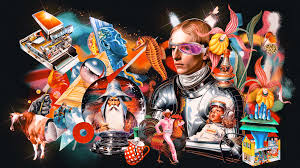
Menu

Maharaja Krishnachandra (1710–1783) of Nadia was not just a ruler—he was a cultural visionary whose patronage significantly shaped the artistic heritage of Bengal. Among his most enduring legacies is his contribution to the growth of Krishnanagar’s art scene, particularly the development of clay modeling in the neighborhood of Ghurni. His reign marked a golden age for traditional crafts, literature, music, and religious festivals in Bengal.
Krishnachandra was deeply influenced by the Bhakti movement and had a profound appreciation for creativity in all forms. Recognizing the potential of art as both cultural expression and social identity, he extended generous support to artisans, scholars, and poets. One of his most notable acts was inviting skilled clay modelers from surrounding areas to settle in Krishnanagar. These artists were provided land and patronage, allowing them to form a community that would later become Ghurni—the now-famous artist colony.
His motivation was both aesthetic and spiritual. He wanted to foster an environment where devotion to gods could be expressed through exquisite craftsmanship. The result was an outpouring of artistic activity, particularly in the form of clay idols for festivals like Durga Puja and Janmashtami. Over time, the artisans began producing secular subjects too—figures from rural life, mythological characters, animals, and even colonial personalities.
The impact of Krishnachandra’s support was profound. The clay artists of Ghurni became known for their realistic detailing, a blend of Indian tradition and European naturalism. Their fame soon spread beyond Bengal, reaching national and international audiences. Today, the distinctive style developed under his patronage remains central to Krishnanagar’s artistic identity.
Beyond visual arts, Krishnachandra also supported classical music, Sanskrit scholarship, and Bengali literature. His court attracted luminaries of the time, contributing to a vibrant cultural renaissance in 18th-century Bengal.
Maharaja Krishnachandra’s legacy as a patron reminds us of the crucial role enlightened leadership plays in nurturing art and culture. His vision transformed Krishnanagar into a creative hub whose influence endures more than two centuries later.



